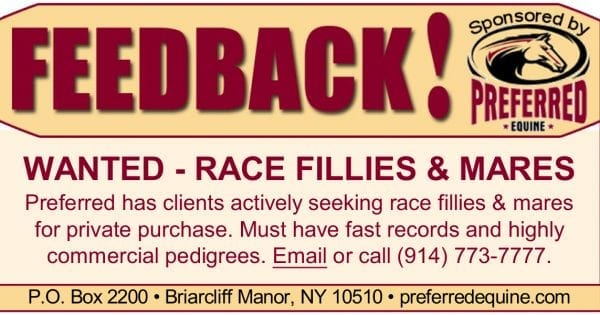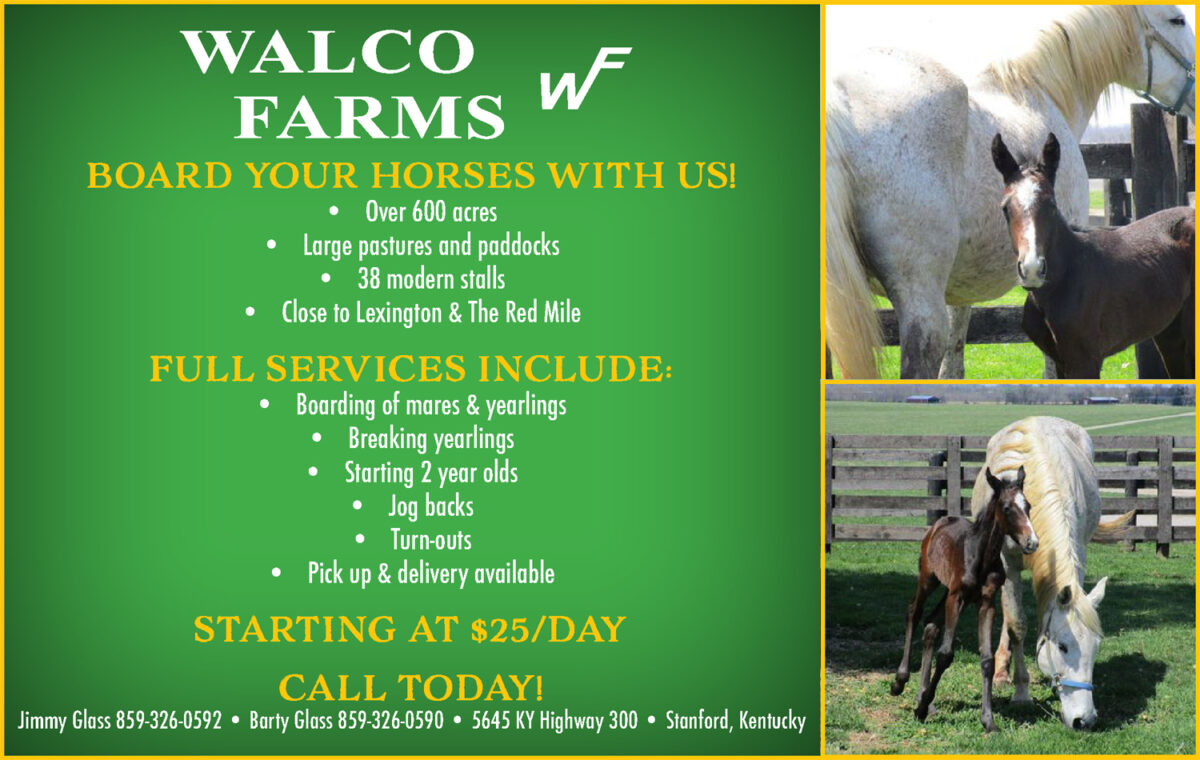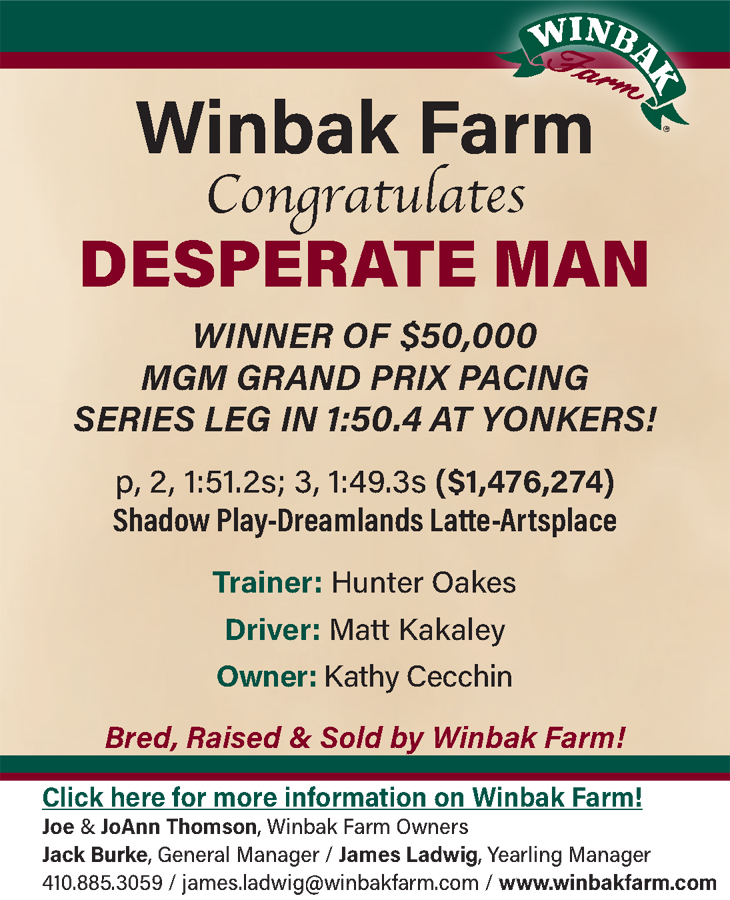HRU Feedback (2017-02-26)
RE: Awaiting The Curmudgeon’s corrections
(response to 2017-02-19 feedback)
Mr. Fenty, what corrections?
I factually pointed out that the cancellation of the New Jersey Classic races and the decision to not go forward with the major Pennsylvania races were two entirely different situations. The New Jersey races were scheduled and were STAKES RACES into which payments had been made. I’m no lawyer, but I would assume that there was a de facto agreement in place.
The Pennsylvania races were LATE CLOSERS that were subject to being renewed or not on a year-to-year basis by the powers that be at Mohegan Sun at Pocono Downs — whether it be the PHHA, racetrack management or a combination of the two.
If your argument is that the loss of the Pennsylvania races is a greater loss to the industry than the New Jersey races, then you have no argument from me. The loss of the Pennsylvania races are not only a major disappointment to the fans, it also hurts many owners who paid significant money for horses, whether they were yearlings or racehorses hoping to participate in these races.
In fact, the Pennsylvania races were dropped rather surreptitiously with very few people knowing about it happening, even many of the major figures in the sport until well after the decision had been made.
To my embarrassment, I did not find out they had not been renewed until this whole Gural/Taylor incident came to light.
I was confronted by a well-respected member of the Hambletonian Society who wanted to know why I hadn’t known about it and how it came to pass.
To my shame, I had no idea of what he was speaking.
Perhaps Sam Beegle the President of PHHA or a member of Pocono management can further enlighten us on the subject.
— The Curmudgeon / Hanover, PA
RE: This sport’s dire need for relevance
This article is excellent forethought, and I personally agree with every word you wrote. I have been involved in the harness racing game in Ontario for 33 years, (and a fan for much longer) and for the last several years been involved in various committees and associations in Ontario and have come to one major realization: This industry is doomed (at least in Ontario), as long as the groups of stakeholders refuse to set aside their own individual interests for the good of the unified cause. What’s important to the owner are different to that of breeders. Breeders’ interests are different to racetrack operators. Horse people at smaller tracks differ from those at the urban tracks, and the beat goes on.
All this to say that as long as everyone is concentrated on receiving what’s best for them, then we will lose what’s good for us all. This being a healthy (and yes relevant) industry. Building relevancy will be a long grind, and I pray it can be done. Creating the excitement of the Kentucky Derby has absolutely nothing to do with the size of the purse, the cost of stud fees, breeder bonuses, government subsidies (aka government reneging partnerships), slot machines or any on-track bar, club, etc. It is mysteriously about the horses that create the spectacle and the people get attracted to the event as “the place to go”.
How is that done? Tough question, but possibly easier to answer. It is time to include the younger generation in this. When I say younger generation I mean younger. This generation will inherit what is done today. Shouldn’t they have the opportunity to use their knowledge of what attracts their generation and how to attract it. My 25-year-old son sat with me to watch some racing on television, and his only comment was how bad the graphics were and how pitiful the picture quality was. This is a small detail and only one thing, but the example is relevant.
The crowds at Hambletonian Day or Jug Day are significant. They are different but they are significant; however, mostly made up of horsepeople and hardcore fans. We need to attract the non-fans as well as casual fans. Much effort and money has been spent attempting to attract my generation. It wasn’t hard to get me involved. I showed up at Woodbine in the summer of 1981 and the rest is history. It was in my blood. I don’t believe I had a choice. If my generation hasn’t been attracted yet it’s going to be a tough sell. Time to switch the focus on the demographics that have been more or less ignored.
If we are not successful in attracting the 18-30 crowd then we will likely slip into the abyss. “Future governments” (it hurts my fingers to type those words) will absolutely shut us down like funding arts in our schools, and they won’t lose a single wink of sleep or an election because of it.
It’s time to wake up, put our differences aside, roll up our sleeves and get to work. You adapt or you die.
— Stephen Palermo / Stable Twenty Three Inc. / Concord, ON
RE: What a Drag!
AMAZING!! After reading track management’s comments in Bill Finley’s article “What a Drag” (full story here) and letters in previous issues of HRU (feedback section here) addressing post time delays, I really understand the proverb “Can’t see the forest through the trees.”
I understand that post dragging is a small part of the problems facing harness racing, but it’s a cog in the wheel of “perceived deception”. And, a little hypocrisy.
Let’s start with the ladder. I have read where Mr. Settlemoir said that the Meadowlands had tried to start on time, but lost about 10 per cent of its handle when doing so. Isn’t this the equivalent of the decisions Brian Sears, George Brennan, Scott Zeron, etc. have made going to Yonkers? (Let’s hire the best actors to star in a play that’s for an audience of 10 people and see if you make it to Broadway. That’s a whole ‘nother letter).
In other words, they did what was financially better for them, than for the good of the sport. Mr. Gural in this situation is no different. He’s willing to forego what’s best for racing so he doesn’t take a hit in his pocket book. (Yes, he is taking “hits” from other angles trying to revive the sport. I recognize this and give credit)
It only stands to reason that the longer the windows stay open, the more money in handle you will generate. Shall we just have an hour between races? If you do, then your handle for that race may go up 50 per cent OR… maybe the owner should train the dog, instead of the dog training the owner!
Go back to starting the post parade with 10 minutes to post and when 10 minutes are up… you’re off. Sure you may lose money in the short term, but in the long run you have a chance of saving the sport. Those who do wait till the last minute to bet will now know, bet or get shutout! Eventually they’ll start getting their bets in with one minute to post, then after five minutes of ZERO.
Why is this important? Because again perception to the current or future players, it screams deception. “The drivers are trying to figure out whose turn it is to win.” “Someone is waiting to see who is ‘live’ so they can bet big money. Why do you think the odds change so much after the race?” “Who knows what they’re doing. It’s all crooked anyway!”
Sure it sounds ridiculous, but you’re objective it to attract NEW BUSINESS, not deter it. I once asked my poker playing 35-year-old nephew why he doesn’t play horses. Beside the integrity issue he said, “I hate waiting all that time between races!” So now let’s tell them there’s five minutes to post and then actually run in 15 minutes. This should make them come back. (Sarcasm for those who didn’t get it)
Do what you can with other tracks to stagger start times, but it’s not a perfect world and sometimes you have to take the hit up front, to gain on the back end. Unless of course you feel you can survive with your current customer base, then leave everything as is!!
— Manny Guagliardo / Hoffman Estates, IL
RE: Krieau Racetrack
Interesting to read Dean Hoffman’s account of his visit to Krieau racetrack in Vienna (full story here). My wife and I visited the track last December. We found the location on Google and set off by subway to find it. When we got to the supposed subway exit, we inquired of some folks of the tracks location and were met with puzzled stares. We finally found someone who directed us to “just walk on the path in the park and you can’t miss it.” Forty-five minutes and several paths later we finally found it. As it turns out, we were about five minutes from it, if we had only gone the other direction from the subways and stayed on the sidewalk. A better directional marker is that it is across the street from their huge football (soccer) stadium.
As to the track itself, we were there on a day when no racing took place and so we went to the stable area to see what it was like and try to find anyone who spoke English to talk racing. As luck would have it, we ran into a trainer named Rob Borghuis, who we learned used to work for the Haughton stable “back in day”. He gave us a tour of his barn, which looked like it was original to the track, as did the other barns we walked through. We talked about the racing there, which he indicated is down and in need of revitalization (sound familiar), and traded war stories about our horses. As it happened, I had one racing that night and he said he would watch and bet him if he could. I hope he did as the horse won and paid 15-1.
— Larry Farley, Berkey, OH
Gural is right about four-year-olds racing
Mr Towers,
Having read your article (full story here) regarding relevancy (or lack there of) I’m even more convinced that Jeff Gural is right regarding four year olds racing. Mr. Gural correctly realizes that the biggest reason our sport lacks relevancy is a lack of stars that attract people outside the industry.
I’m south Florida based and I clearly remember the crowds that would show up when a Niatross or Cam Fella came to town. So many people came, many of whom knew next to nothing about harness racing, but just wanted to see what all the excitement was about. It was standing room only and literally thousands of people were turned away. Can you imagine that happening today?
More recently, I was amazed to have friends, who know I’m in the business but are not really interested or knowledgeable about harness racing, ask me about Wiggle it Jiggleit and Always B Miki and those horses never even raced down here. The crowds that started to grow, both in person and on the Internet, at different tracks these horses raced is testament to the power of stars. And while this doesn’t translate to the milk industry it most certainly does to other sports. Look what California Chrome and others like him do for the thoroughbred racing. Tiger Woods, Danica Patrick, etc.. Stars create the human interest that sports writers like to write about which is what ultimately creates the buzz.
The Gural Rule addresses this issue directly and in the best interest of the industry. Your recent previous article regarding breeders concerns (Marvin Katz and others) complaining of lost revenues because of the Gural Rule seems somewhat self-serving. FYI, it is not my intention here to slight Mr. Katz and others whose concerns are most certainly valid and well intended. I’m just offering a different point of view.
Lexington and Harrisburg average sales were up substantially, yet the cause and effect of which are not clear. Perhaps it had something to do with increased interest. If so, and in my humble opinion, the long-term interest in the sport takes precedence over short-terms losses of those fortunate enough to have the “problem” in the first place.
For my part, should I ever be fortunate enough to be in the position of racing my four-year-old star for the good of the game you won’t hear me whining or complaining about it. I intend to be trackside with a great big smile on my face cheering like the rest of the crowd that my horse helped create.
— Rick Berks / Boca Raton, FL
More response to Towers’ column
How can the government not consider harness racing relevant when you consider all the jobs it creates — all the money spent on feed, hay, boarding the horses, farrier services, vets, etc.? And what about the horses/the real athletes’ lives?
— Lorraine@Horse Lovers United Inc.
Key to survival
It is essential for every business’ survival, whether large or small, to understand and adjust to the prevailing market changes and attitudes of the people it serves. As an example: Walmart lost billions of on-line sales to Amazon, because they failed to recognize that the consumer prefers online shopping instead of going to a brick and mortar store. In essence, unlike harness racing, Walmart is “too big to fail”, and have the deep pockets to reinvent their business model to stay relevant. JC Penny is staying relevant by offering millennials plus-size clothing. Attention: harness racing, it’s now or never for this industry to reinvent itself. Here are three suggestions:
1. Improve Transparency.
a. Too secretive.
b. Engage with the public as to why a driver is “leaning-back”.
c. Explain to newbies way the races are typically done in a single file.
d. Denote shoeing and equipment changes.
2. Experiment with day racing.
a. Try one or two days a week (I know some do, but not all)
3. Advertise, promote its value, and make it easy to get to the track.
a. Free bus service for the elderly.
b. Free bus service for folks at a public transport centers.
c. Free programs.
d. Give a $5 betting token.
e. Free turkey and beef dinner with all the fixings and a soft drink.
i. Limit to one serving, second serving apply a minimal cost
f. Advertising…
i. Major print magazines (yes they’re still being printed)
ii. Piggyback on TV shows where racing is mentioned. Last week’s episode of Billions (ShowTime Sunday evening) the main character was at Yonkers. Key point to the plot.
iii. Run ads during the televised Kentucky Derby, Preakness, and the Belmont. Breeders’ Cup events, and all other horse racing events.
iv. Do info commercials, use known actors.
There is a bunch more that can be done, so hey everybody, jump w/your ideas. Then we’ll present those ideas to the USTA, and if we don’t see action…then a march on Columbus. (wink wink)
– Marc Abramson / Houston, TX (posted on HRU’s Facebook page)

















